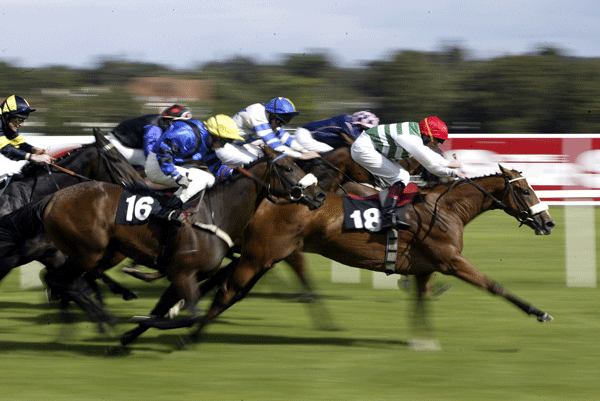News | Reading Time 4 minutes
Bridging the gap between gut microbiota science and horse welfare
Lallemand Animal Nutrition recently held its first seminar dedicated to the pet and equine microbiome in Windsor, UK. The goal of the event was to bridge the gap between science and industry, with state-of-the-art research on metagenomics and case study reports of nutraceutical applications to support gut health, immunity, and well-being in companion animals. Equine functional ingredients business is driven by joint and muscle integrity, udder, and hoof care. Lallemand’s microbial-based and natural solutions, in particular probiotic yeast and antioxidants, are well placed to address these demands while answering the need for transparent, functional, and natural ingredients.

The microbiota: a fascinating modulator of horse well-being and immunity
In horses as in any other animals, there is evidence that the microbiota plays a crucial role in maintaining gut homeostasis and gut health, representing a fascinating modulator of animal well-being and immunity. French equine Vet and VP of the French Equine Vet Association (AVEF), Jean-Marc Betsch, focused more precisely on the equine microbiota establishment and the effect on gut health pre-weaning, a crucial period for foal morbidity.
As with any mammal, microbiota development is intimately linked to the mare’s own microbiota during and after birth and during gestation: this is known as maternal imprinting. A strong supporter of this concept, Betsch conducted trials in gestating mares and newborn foals to evaluate the potential of live yeast supplement (S. cerevisiae boulardii CNCM I-1079) on foal digestive health. This showed a positive effect, first on the mare’s microbiota balance as shown by microbial analysis, with subsequent transmission to her foal. Supplementation of the mare and the foal resulted in a reduced risk of digestive infections and enhanced foal growth. In addition, this trial indicated a positive effect on the mare’s colostrum quality in terms of immune protection (IgG levels); certainly, an avenue to continue exploring.
A close relationship between gut microbiota and parasite infection
Cyathostomins are parasites omnipresent in horses that can lead to significant gut health issues. The generalized usage of anthelmintics leads to drug resistance as seen by increased reports of disease or death due to parasites. Dr. Laura Peachey, Senior Lecturer in Veterinary Parasitology at Bristol Veterinary School, UK, explored the relationship between anthelmintic administration and the horse microbiota.
Her study concluded that infection and anthelmintics significantly alter the global composition of the equine gut microbiota, reduce microbial diversity which results in dysbiosis, and that there was a link between parasite burden and dysbiosis. As a consequence, nutrient absorption was impaired, especially in horses with a high burden.
This data was completed with a pilot study conducted by Lallemand R&D team to evaluate the effect of worming on equine microbiota in the absence of infection. The study indicated only a slight difference in microbial alpha- or beta-diversity, but a significant change in the relative abundance of Firmicutes and Bacteroidetes and their ratio, which could represent an interesting marker for gut health. The team is working to define further efficient biomarkers and nutritional strategies to protect equine microbiota balance following worming. Dr. Peachey concluded that we should modify our approach to parasite control and consider the effect on gut microbiota more carefully. Among the different approaches, she suggests that gut microbiota has the potential to be a powerful tool in augmenting parasite control. The role of pre and probiotics are preponderant.
This potential was further explored by Audrey Sacy, from the Lallemand R&D team, who introduced the audience to practical methods to assess equine gut health and digestion quality, which she qualifies as ‘visible signs’ to be used in practice. These include faecal scoring and dung sieving, a tool demonstrated to be effective in easily evaluating diet digestibility. These tools were used to evaluate the potential of probiotic live yeast Saccharomyces cerevisiae I- 1077 (LEVUCELL SC) on the equine digestive process. Significant improvement in diet digestibility was shown with the live yeast. This should in turn optimize diet efficacy and nutrient absorption, as shown by improved body condition.
As concluded by Sacy, live yeast is not a magic bullet but it appears to be an efficient tool to positively impact the equine caeco-colonic environment.
Click here for more information on our equine range of solutions!
Published Dec 13, 2022 | Updated Feb 21, 2024